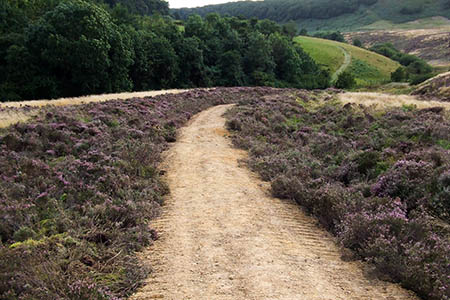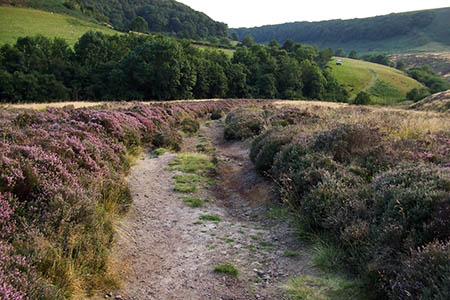Walkers accessing one of Yorkshire’s natural wonders will find the going a little easier after work by the North York Moors National Park Authority.
The main footpath into the Hole of Horcum has been restored after years of erosion, and drainage work at the site will also help alleviate flooding in nearby towns, the authority hopes.
The original line of the path was restored with re-landscaping of each bank of the route.
The path, now partly stone pitched, provides a smoother, hard wearing surface and a gate has replaced a ladder stile at the top of the bank to provide easier access.
In addition to numerous pairs of feet, rainwater was also causing damage to the footpath. Work carried out to tackle drainage problems will benefit not only walkers, but will also contribute to the Slowing the Flow project by increasing the ground’s ability to absorb water and therefore slow the passage of water into Levisham beck.
David Smith, a senior ranger for the North York Moors National Park Authority, said: “Putting hard landscaping in a sensitive location like the Hole of Horcum is always tricky but without this work, people would have continued treading an ever wider and deeper berth of the main path causing a considerable scar on this iconic place.
“I am very pleased with the result and feel it balances the desire to provide sustainable and easy access for walkers with minimal impact on the landscape.”
Thousands of people visit the vast natural amphitheatre every year. Legend says it was created by the giant Wade, scooping up a handful of earth to throw at his wife Bell.
The park authority said the challenge was to create a sustainable footpath that wouldn’t detract from the unspoilt surroundings.
The Hole of Horcum was created by a process called spring-sapping, in which water welling up from the hillside gradually undermined the slopes above, eating the rocks away grain by grain.
Over thousands of years, a once narrow valley has widened and deepened into an enormous cauldron, and the process still continues today.
Slowing the Flow works with nature to try and store more rainwater in the landscape and slow its passage downstream. This is expected to help towards reducing the frequency and severity of future floods in Pickering and Sinnington.


